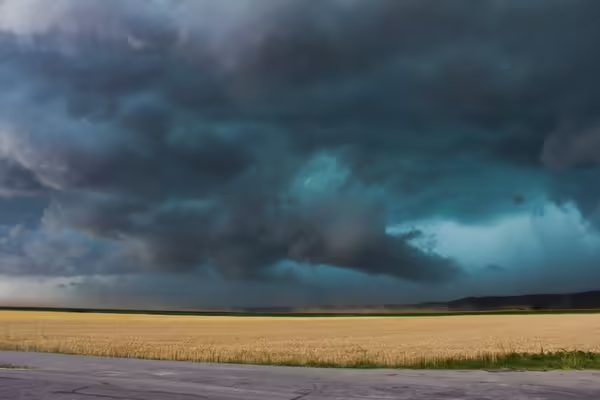
URBANA, Ill. – Many communities across the Midwest have already begun experiencing severe weather as warm, humid airmasses from the Gulf of Mexico have collided with the cooler, dryer air from Canada, resulting in unstable atmospheric conditions.
Although thunderstorms and tornadoes can happen anytime during the year, most occur during the warmer months. April, May, and June are the most active months for tornadoes across the US, and in Illinois, nearly 80% of all tornadoes occur during this time. Thunderstorms are commonly seen from April into the early fall; however, the greatest activity occurs from May through July.
Be prepared
While it may seem that severe weather has become an inevitable part of our lives, taking steps to help alleviate some of its stress will benefit you and your loved ones. Talking about what to do in an emergency and why disaster preparedness is important will help you and others be less likely to become stressed during an already stressful situation. Developing an emergency plan, assembling a disaster supply kit, and practicing your plan will help everyone know what to do and help keep you and your family safe.
Watch for alerts
Knowing what types of disasters and emergencies may occur within your community will help you prepare. Establish a system to receive emergency weather notifications. You can purchase a National Oceanic and Atmospheric Administration weather radio for your home or set up your phone to receive free wireless emergency alerts from the National Weather Service in a certain radius of an emergency. The WEA provides timely emergency alerts, information about the type and timing of the emergency, and any action you should take.
Plan ahead
Place an appliance thermometer in your refrigerator and freezer. These specially designed thermometers provide accuracy at cold temperatures and help to ensure food is kept safe. Refrigerators should have a temperature of 40°F or below, and freezers at 0°F or below.
Freeze water in food-safe containers if bad weather is expected. The ice can help keep food items cold in the refrigerator, freezer, or coolers. It can also be used as additional water if power is out for an extended period. If you have gel or ice packs, ensure they are frozen, as they also can be used to keep food cold.
During a power outage
When the power is out, keep the freezer and refrigerator doors closed as much as possible. If the doors are closed, food will stay safe for up to four hours in the refrigerator. In a freezer, food will be safe for about 48 hours if it is full and 24 hours if it is half full.
If the temperature of your refrigerator is starting to go below 40°F, take action. Move perishable foods, such as meat, poultry, seafood, milk, and eggs, to a cooler and use ice packs or containers of frozen water to help them maintain a temperature of 40 °F.
After a power outage
Check the temperature of foods and discard any refrigerated perishable foods that have not been kept at 40°F or below or if you have been without power for four hours or longer. Food may be safely refrozen if it contains ice crystals or is at 40°F or below. However, the food quality may decrease due to thawing and refreezing.
Stay safe
Do not taste perishable refrigerated foods, such as cold cuts, dairy products, and leftovers, to see if it is safe if it has been above 40°F for four hours or more. These foods may cause illness if consumed, even when thoroughly cooked.
Learn more about what you can do to keep food safe during a disaster by checking out University of Illinois Extension’s food safety and disasters website.
SOURCE: Diane Reinhold, Nutrition and Wellness Educator, Illinois Extension
EDITOR: Herbert Chavez, Media Communications Coordinator, Illinois Extension
Illinois Extension leads public outreach for University of Illinois by translating research into action plans that allow Illinois families, businesses, and community leaders to solve problems, make informed decisions, and adapt to changes and opportunities. Illinois Extension is part of the University of Illinois Urbana-Champaign College of Agricultural, Consumer, and Environmental Sciences.